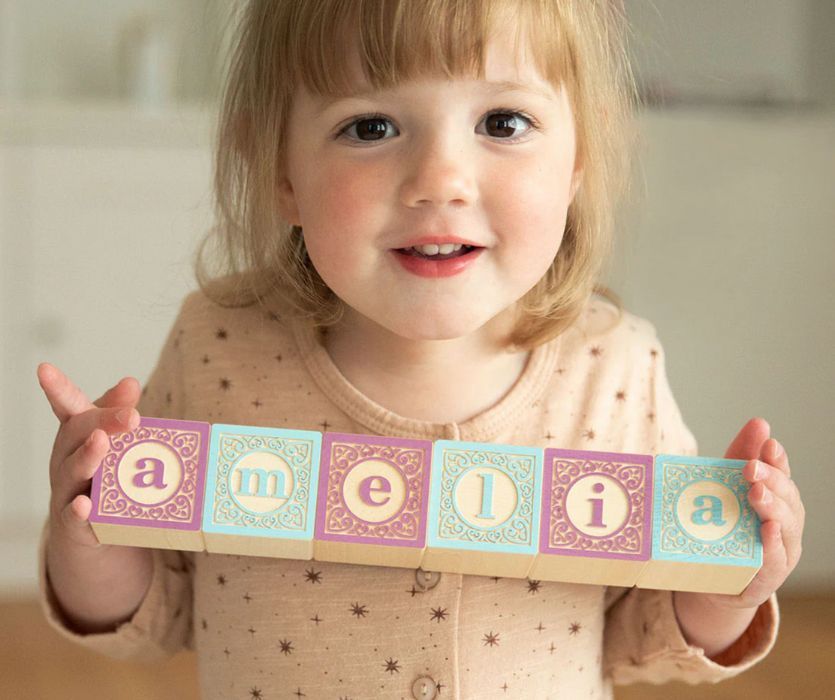Sleep training. Two words that strike fear into the hearts of even the most confident, steely-nerved mothers. Frankly, the only words I’m more afraid of are “potty training” and “we’re out of coffee.”
So, it was with great trepidation that I embarked upon sleep training my 4-month-old baby boy. I remembered all the crying (mostly by me) from sleep training my daughter and I wasn’t sure I could do it again. On the other hand, I was so damn tired that I feared for me, my kids’, and pedestrians’ lives each time I got behind the wheel of the car. It was time.
This time around, though, all my worries were for naught. Sleep training was a piece of cake. It was so easy that I’m almost afraid to write the words for fear the sleep gods will take this miracle back.
I’m going to tempt fate, though, and write about what we did. If you’re like me – exhausted and pansy-assed – maybe this will work well for you, too?
The Cry-Just-A-Little Sleep Training Method
Let’s start with the big picture. We wanted Max to sleep in his crib, without his swaddle, and with no pacifier replacements for a 6-hour stretch in the middle of the night. We worked towards this in stages.
Stage 1: Move to the Crib
Stage 2: Lose the Swaddle
Stage 3: Stretch out night feedings
Know Yourself and Your Baby
It’s good to be honest with yourself. Are you someone who can soothe without picking your baby up? Or do you need to cuddle your baby when he cries? Are you a rip-the-bandaid-off kind of person? Or do you do better taking things more slowly?
Only choose strategies that you think you can implement consistently. And, hey, if it all feels like more than you’re up for, then don’t do it. Your baby will figure it out over time. No kid graduates high school crying for mommy three times per night.
Sleep training – how and if you do it – is a personal choice. Do what works for you.
What My Baby Can Do
My son was four months old when we sleep trained, so it wasn’t reasonable to expect him to sleep all night. We both were ready to be done with three nursings per night, though.
What I Can Do
I know that I can’t sleep-train in the small hours of the morning. I lose track of time and can’t bear to hear my baby cry. That’s a recipe for being inconsistent (the dirtiest word in sleep training). So, in my family, we only work on sleep training at bedtime. Also, I can’t resist the urge to pick up my baby when he cries, so some soothing has to be ok.
Choose Your Own Adventure
This can work a lot of ways. Before you start this sleep training method, make choices that will work for you.
1. Check-and-console intervals
We chose to start with 5, 10, and 15 minute check-and-console intervals. That means that our first check on Max (if he was crying) would be after 5 minutes. The second check at 10 minutes. The third and all future checks for that evening at 15 minutes. You can choose whatever intervals feel right for you – 30 seconds, 45 seconds, and 1 minute are just fine.
2. Soothing method
Most sleep experts agree that the fastest way to sleep train includes not picking baby up when you console them. The suggestion is to pat and shush for a minute or so while leaving baby in the crib.
That’s all well and good, and if you can do it, then add a little extra cream to your coffee in celebration.
If consoling without picking baby up feels too challenging (it is for me), you can choose a different method. We planned to pick up Max and do some soft bouncing and consoling.
The key is that whatever consoling method you choose, baby needs to go back into the crib awake. The whole point is for baby to learn to put himself to sleep.
3. Sleep Outfit
When you ditch the swaddle, you’ll want baby in some sort of wearable blanket. Pick your favorite, but be sure to avoid any loose blankets, pillows, or loveys until baby is at least a year old.
4. Your Coping Strategy
How are you going to take care of yourself during the sleep training? Some options: Turn up the volume on the TV, eat super-crunchy potato chips, sit on your porch with the monitor volume turned off… Personally, I watch West Wing with the monitor volume turned off and the monitor video on. Often while eating frozen chocolate chips (because chocolate makes everything better and freezing it makes it loud to eat).
5. Train at night or just at bedtime?
I can’t sleep-train in the small hours of the morning. I lose track of time and can’t bear to lie in bed, listening to my baby cry. So, in my family, we only work on sleep training at bedtime.
Things go faster (so Richard Ferber, sleep guru, says), if you train at nighttime wakings too. Your call.
6. Dream Feed or No?
A dream feed is when you nurse or give baby a bottle late in the evening, while he’s still asleep. The theory is that baby sleeps through this feeding, but it aligns his longest stretch of sleep with the time you’ll be sleeping.
There are two schools of thought about the dream feed. On the one hand, some doctors worry that feeding baby when he’s not hungry may cause issues around ignoring hunger cues when he gets older. On the other hand, I couldn’t find any research showing that this is the case. It’s simply not been studied rigorously, so data can’t really help us here. One note – once baby has teeth, you probably want to move away from dream feeds to help prevent cavities.
We didn’t do a dream feed with our first baby. We are doing a dream feed with our second. Why did we make a different choice the second time around? I need everyone to be on similar schedules. I need to be able to predict what each child will need and at what times to help me stay sane. The dream feed gets me at least 6 hours of both children sleeping at the same time each night.
The Plan
Nights 1-3
These nights we focused on getting out of the swaddle, into the crib, and going to bed drowsy-but-awake. Here’s how it breaks down:
- Bedtime routine. Do your usual bedtime routine. If you don’t have one, start now. I like PJs, book, lullaby, bed.
- Swaddle.
- Night 1: Swaddle with one arm out.
- Night 2: both arms are out of the swaddle.
- Night 3: switch to baby’s wearable blanket.
- Soothe. Do all the usual soothing until baby is almost asleep. Once his eyelids start to close, put him the crib, sing a lullaby, and walk out.
- Intervals. If (when) baby starts to cry, wait your chosen amount of time. Then, when each interval is up, use the soothing method you’ve chosen.
- In the night. If you’re sleep training in the nighttime, use your intervals to know when to soothe. If you’re not training in the night, proceed as you normally would pre-training.
Nights 4-6
First. Let’s pause to celebrate. Baby is out of his swaddle! Hooray you! Now, it’s time to start working on the night wakings. You want to very gradually extend the amount of time between baby’s bedtime feeding and his first night feeding (called the feeding gap). You’re basically helping baby’s body learn to get hungry at a different time.
- Night 4: Delay the night feeding by 30 minutes from baby’s usual time. Use whatever soothing methods necessary (except no nursing or bottle) to help baby wait. For example, if baby usually wakes up 4 hours after his bedtime feed, you will bounce, sing, hold, shush, offer a pacifier, etc for 30 minutes. Then, at 4 hours and 30 minutes, baby can nurse or have his bottle.
- Night 5: Add 30 minutes. Imagine night 4’s feeding was at 4 hours and 30 minutes after the bedtime feeding. On night 5, you want a 5 hour feeding gap.
- Night 6: Add another 30 minutes. If night 5 was had a 5 hour feeding gap, then night 6 will have a 5 hour and 30 minute feeding gap.
Continue until you reach the appropriate feeding gap for your baby’s age.
You can do this as slowly as you’d like. Maybe you spend a week at a 4 ½ hour feeding gap. Whatever works for your family.
What’s an age appropriate feeding gap?
- Four-month-old: 6 hours.
- Six-month-old: 9 hours.
- Eight-month-old: 12 hours.
(This is all assuming your baby’s weight gain is growth-chart appropriate and he has no other health problems – ask the pediatrician to be sure.)
If your four-month-old is already sleeping 6 hours in a row, just not at a time you are in bed, consider trying the dream feed. Then, work towards a six-hour feeding gap between the dream feed and the first nighttime feeding. (This is what we do for Max.)
How this sleep training method went for my family
On the first night, Max cried for 4 minutes and 32 seconds and then fell asleep. It was a sleep training miracle and is definitely not what parents should expect. However, it’s worth noting that these things do happen and training isn’t always as tough as we’ve all been led to believe.
The second night was the hardest (which is often the case). Max cried through his first 5 minute interval. I soothed him with some rocking and bouncing. Then he cried through his 10 minute interval. More soothing and rocking. Then he cried for 1 minute and fell asleep. My husband and I high-fived like we’d just won the Super Bowl.
By night 3, Max was falling asleep on his own without crying. So was I.
The ability to put himself to sleep seems to be all that Max needed to make it through longer nighttime stretches. When it was time to extend his feeding gap, I steeled myself for a tough road. (This kid loves to eat.) But, each night, he stretched his feeding gap by himself. That’s right. I did nothing.
Max is now 5 months old and consistently sleeps from 6pm – 6am with a 10pm dream bottle. I know. It’s better than a Caribbean beach vacation.
Our next reco: When Your Baby Hates Sleep




Leave a Comment